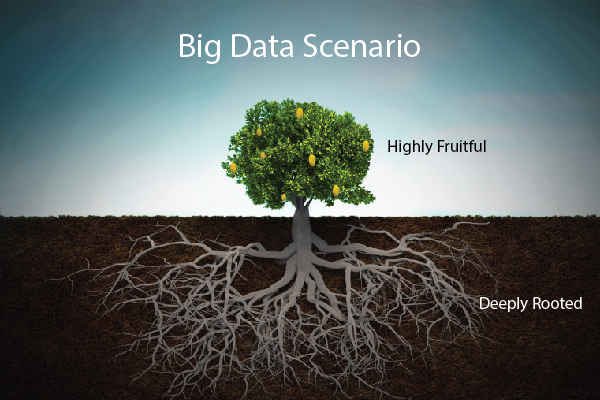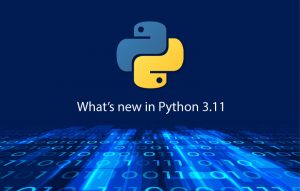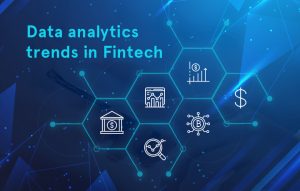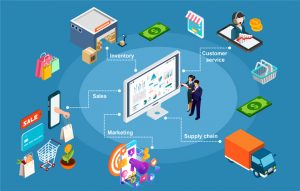A new field has emerged with the rise of data stored in the company’s systems and eventually it has taken on a huge role in implementing different business processes and strategies. Over the years, enterprises have been storing data from various different sources and it has now grown into big data. Data is ubiquitous, thus its importance has become a prime concern for businesses to leverage benefits at different stages, locations, and time for the benefit of the company.
Also, the data is crucial and businesses can easily utilize suitable data in the different purpose. Today, every sector of the economy is accessing more data than the past and now it has become essential for them to make right decision at the right place at the right time-frame.
All the data captured by enterprises needs to be refined for the utilization of their processes and this has become one of the primary concerns for them. The refined data helps in addressing a wide range of problems. However, enhancing customer experience and enhancing business process efficiency are the top concern of utilizing big data. Nowadays, enhancement of customer experience in the field of healthcare, transportation, insurance, media & communications, retail, and banking are crucial for businesses. However, businesses are using data science to create information products for monetization with different tools and technique.
Also, the future of marketing and sales depends on the data and its analysis.
The big data is continuously transmitting into numerous real world scenarios in the business world. To leverage the next big opportunity enterprise-grade businesses need to focus on data science technique.
Data Science to explore new opportunities
Data Science is a new and collaborative field about systems and processes to extract knowledge and select useful insights from data. It uses statistics and data mining for predictive maintenance. Data science started with the collection of raw data which is further processed to clean the dataset for exploratory data analysis with the help of models and algorithms to create reports that are easy to understand with the help of visualization tools.
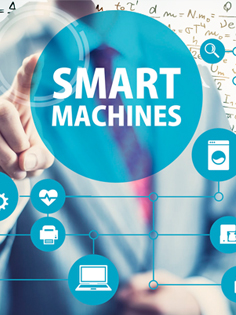
How AI and Data Science solve the biggest business challenges of today
Webinar agenda
- An Overview on Data Science and Artificial Intelligence
- Why every business needs Data Science and AI
- Business cases for varied industries
- Demo
- Roadmap for implementation
- Questions
The art of turning data into actions through useful insights is known as data science. This can be achieved by developing data products that provide meaningful and actionable information without revealing underlying big data analytics to the decision makers.
Gartner has already given its call to wake up to the algorithm economy, which enterprises can leverage for benefits by harnessing big data. Furthermore, it explains that the big data is gaining its value from proprietary algorithms which opens vast opportunities for enterprises.
Organize data, package data, and data delivery are three main components of data science. For any business an organized process is an executed one, that’s why you need to keep things straight and clear while dealing with bulky data. When you are planning to leverage opportunities from big data make sure you choose the best tools and a team of skilled data scientists.
The Circle of Data Science
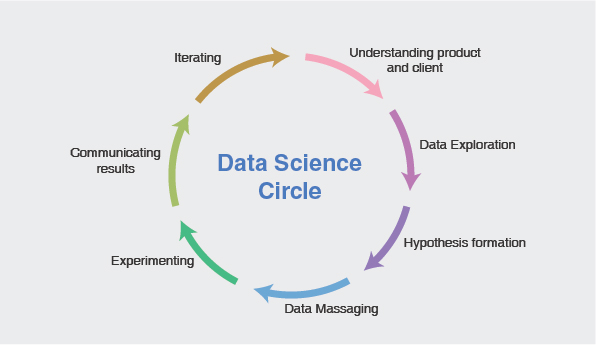
The next digital gold rush will be focused on how you do something with data. -Gartner
Having big data and what to do with that big data are two different things, however businesses must focus on science other than the data. Companies should focus on choosing right software tools and techniques to create compelling visual insights that can be easily shared across the organization, even on mobile devices to power businesses with mobility.
Let’s talk about the leading player in data science field. The main programming players in the data science field are Python and R.
Programming Python and R
Both leading programming languages have their own pros and cons, but you need to prioritize which tool you will need to overcome a particular business problem.
Data Science Language Python
Python was created in 1991 by Guido Van Rossem and it emphasizes productivity and code readability. It is popular as a general purpose web programming language, which is generally considered as the king of data science programming languages. It is a general purpose multi-paradigm programming language for data science. It has gained huge popularity due to its syntax simplicity and operability on different systems.
Python is great for managing the myriad tasks you’ll have to do when coding other than mathematics. It is an open source based language loaded with features such as efficiency, broadness, extensibility, and can be easily mastered under expert guidance. NUMPY/SCIPY, PANDAS, SCIKIT-LEARN, STATS MODELS, MATPLOTLIB are the libraries and packages under this language. Walt Disney and Dropbox are some of the leading names who are using Python to leverage opportunities from the big data using data science technique.
Python programming has been an important part of Google since the beginning, and remains so as the system grows and evolves. Today dozens of Google engineers use Python language, and we’re looking for more people with skills in this language. – Peter Norvig, Director at Google.
Advantages of using Python for Data Science
- The language has approximately 40,000 add-ons available which are listed under three hundred different categories.
- It is widely used in different tasks such as web development, automation, system testing, ETL (Extract, transform, and load), and gaming, etc.
- The transmogrifier in Python language makes it easy to simplify big and complex data.
- The syntax is clear and readable, which makes it easy to understand.
- With Python programming can be done with faster speed. It also helps in writing new programs quickly which saves a huge amount of time.
Data Science Language R
In 1995 Ross Ihaka and Robert Gentleman created the open source language R. It is known as the golden child of data science. It is an open source programming language that offers a suitable environment for statistical computing and graphics. It has an array-oriented syntax which makes it easy for programmers to translate from math to code. This open source programming language has all-in-one package for statistical orientation. It has also got the analysis toolkit that gives you excellent charting benefits. It is robust language with a vibrant online community.
The strength of R is its widespread support in the statistical community.
Advantages of using R for Data Science
- R language is the best tool for data scientist for data visualization.
- It provides all essential tools for data scientists such as statistical models, data manipulation, and visualization charts, etc.
- Using R, data scientists can create unique and beautiful data visualizations for easy and appropriate understanding.
- R programming provides reproducible research which means code and data can be given to a third party for reproducing the results. Enterprises can easily compare the results.
- R language gives you flexibility to mix and match different statistical and predictive models for getting the best possible outcome.
- It has a rich community support of approximately 2 million users and thousands of developers and data scientists.
Conclusion
You can choose any language depending on your requirement, whether you need a robust app or mathematical interpretation of your data. Both the leading programming languages- Python and R are being widely used across various different industries.
However, you can connect with a company that has experienced data scientists and data science consultants. Share your requirements with them and they will suggest you which language you need to proceed with your data science project.
Let me give you an example which will clear all the remaining doubts in your mind. Try to think for a while- what makes Google the most valuable brand in the world? Is it data? No, it’s not! It’s the company’s algorithm which is its most closely kept secret.
So, you need to focus on science rather than the data. To make useful insights to create strategic moves in your enterprise-grade business you must choose wisely and act smartly to harness the next big opportunities out of big data.
That means you need to have the right tools and most importantly an expert team of data scientists who will assist you in implementing your big ideas into execution.
Let’s connect and start creating software solutions to extract and refine data for your purpose.


